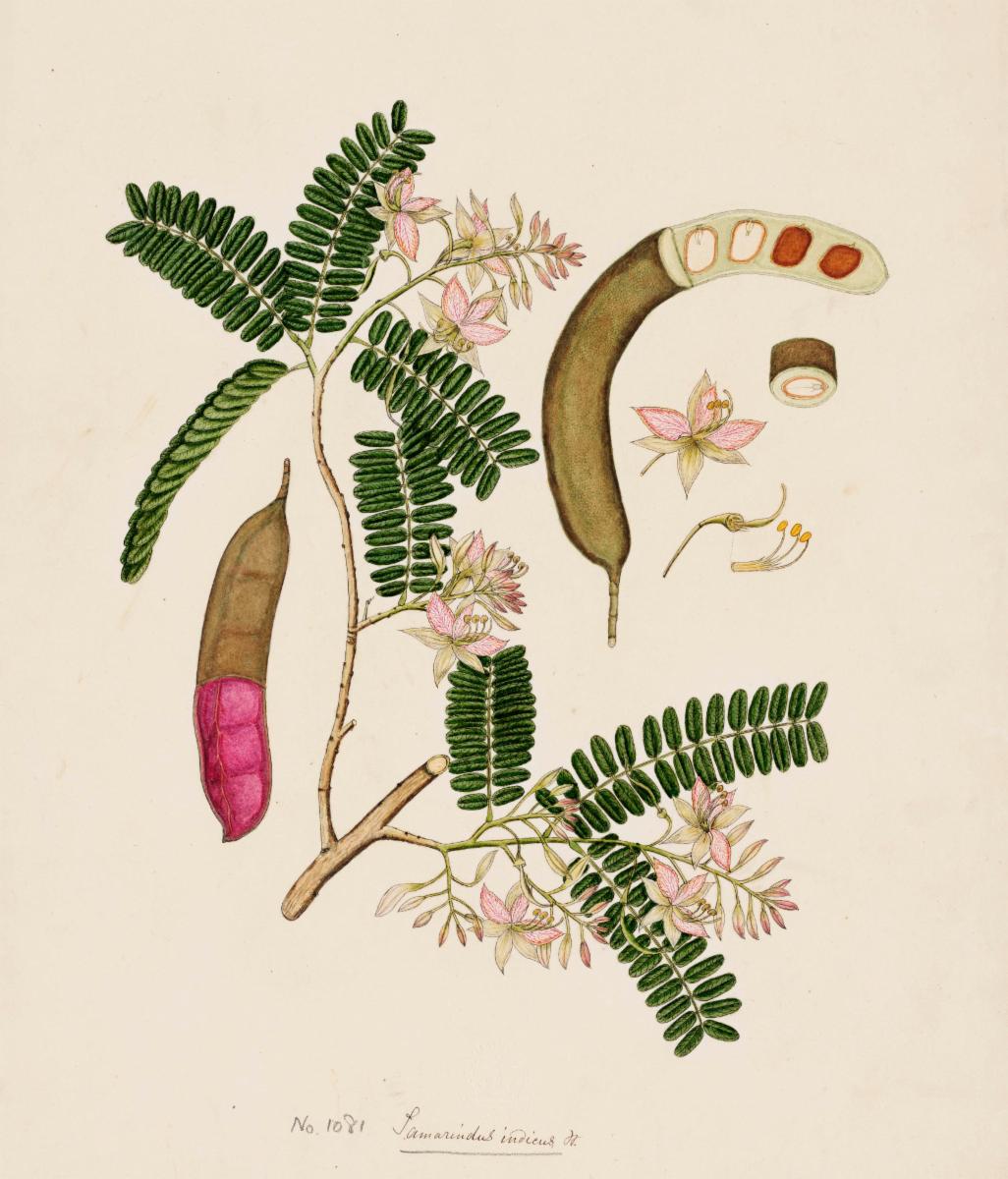Aloe vera
Number of times mentioned: 1
Latin name: Aloe barbadensis miller
Region of origin: North Oman
Quotations:
"The more they flourished, the more she seemed to wilt, and she walked around the house, baked aloes tied to her swollen feet, her limbs greased with a mixture of nutmeg and soft candle and coconut oil, her head bound with a cloth soaked in the juice of fresh limes, wearing two, sometimes three dresses, one over the other, and one of Dixon's old jackets over them all to keep from freezing." (page 8)
Botanical reference: “Aloe Vera (L.) Burm.f., Indica: 83 (1768),” World Checklist of Selected Plant Families: Royal Botanic Gardens, Kew, accessed June 26, 2021, http://wcsp.science.kew.org/namedetail.do?name_id=298116.
Caraili (also known as bitter melon, corailli)
Number of times mentioned: 2
Latin name: Momordica charantia
Region of origin: Africa
Quotations:
"In the swampy part he planted dasheen, and on the rest he planted okro and corrailli and bodi beans." (page 108)
"He spent his time on the platform talking about birdcages and bamboo and wood, about corraili and bhaji and baigan, about scrubbing- boards and dog chains, so that the majority of people walked away from his meetings and those who remained did so only because they felt entertained by his utterances." (page 110)
Botanical reference: Susanne S. Renner, “Bitter Gourd from Africa Expanded to Southeast Asia and Was Domesticated There: A New Insight from Parallel Studies,” Proceedings of the National Academy of Sciences 117, no. 40 (October 6, 2020): 24630, https://doi.org/10.1073/pnas.2014454117; Julissa Rojas-Sandoval and Pedro Acevedo-Rodríguez, “Momordica Charantia (Bitter Gourd),” CABI, 2014, https://www.cabi.org/isc/datasheet/34678."
Flamboyant
Number of times mentioned: 1
Latin name: Delonix regia
Region of origin: Madagascar
![]() E.H. Norton, Poinciana Regia (Flamboyant), n.d., Hand-colored lithograph, n.d., Brazilian flowers drawn from nature in the years 1880-1882 in the neighbourhood of Rio de Janeiro, http://powo.science.kew.org/taxon/urn:lsid:ipni.org:names:491231-1.
E.H. Norton, Poinciana Regia (Flamboyant), n.d., Hand-colored lithograph, n.d., Brazilian flowers drawn from nature in the years 1880-1882 in the neighbourhood of Rio de Janeiro, http://powo.science.kew.org/taxon/urn:lsid:ipni.org:names:491231-1.
Quotations:
"They began a beautification programme in Port-of-Spain, which involved planting flamboyant trees and removing the vagrants from main thoroughfares and allowing them to roam on designated streets." (page 118)
Botanical reference: Pedro Acevedo-Rodríguez and Julissa Rojas-Sandoval, “Delonix Regia (Flamboyant)” (CAB International, 2013).
Mustard
Number of times mentioned: 1
Latin name: Sinapis alba
Region of origin: Europe, Africa, and Asia
![]() Hermann Adolph Köhler, Sinapsis Alba, 1887, Coloured plate, 1887, Medizinal-Pflanzen, Vol. 3, http://powo.science.kew.org/taxon/urn:lsid:ipni.org:names:288952-1.
Hermann Adolph Köhler, Sinapsis Alba, 1887, Coloured plate, 1887, Medizinal-Pflanzen, Vol. 3, http://powo.science.kew.org/taxon/urn:lsid:ipni.org:names:288952-1.
Quotations:
"Nearby, the girls are skipping rope, screaming, as they turn the rope faster and faster: ‘Salt ... Vinegar ... Mustard ... Pepper ... Pepper, pepper!’" (page 36)
Botanical reference: Pedro Acevedo and Mark Strong, “Catalogue of Seed Plants of the West Indies,” Smithsonian Contributions to Botany 98 (January 1, 2012): 177, https://doi.org/10.5479/si.0081024X.98.1.
Pangola grass
Number of times mentioned: 1
Latin name: Digitaria eriantha
Region of origin: Africa
Quotations:
"In a clearing in the forest he had found a huge field overrun with pangola grass." (page 71)
Botanical reference: “Digitaria Eriantha,” Tropical Forages, 2020, https://www.tropicalforages.info/text/entities/digitaria_eriantha.htm.
Para grass
Number of times mentioned: 1
Latin name: Urochloa mutica
Region of origin: Africa
Quotations:
"Teena lost she Thermos flask / And she mother find it, Teena lost she Thermos flask / And she find it in a bunch of para grass" (page 98)
Botanical reference: “Urochloa Mutica,” Center for Aquatic and Invasive Plants, 2021, https://plants.ifas.ufl.edu/plant-directory/urochloa-mutica/.
Red lavender
Number of times mentioned: 1
Latin name: Lavandula dentata
Region of origin: Spain, Gibraltar, northwestern Africa, Ethiopia, Eritrea, Israel, Jordan and the Arabian Peninsula
Quotations:
"He went into Woodford Square, walking through the grandest guard of honour ever assembled for anybody in this country, the line stretching from the Singer entrance on Frederick Street right up to the podium, the whole country gathered there, the place looking and smelling like Trinidad and Tobago, market women in Shouters' headdress, smelling of red lavender and rosewater, vendors of paratha roti in orhnis, about them the scent of fresh coconut oil and burnt geera, clapping hands and shaking tambourines; stevedores with flags in their huge fists and towels draped over their formidable shoulders, nurses in grey stockings and starched aproned uniforms, vagrants in their Sunday best, soapbox politicians with their fingers on their lips, choirs of schoolchildren, oyster vendors and sugarcane workers, and a contingent of supporters from the opposition parties." (page 57)
Botanical reference: “Lavandula Dentata L.,” Plants of the World Online, accessed June 27, 2021, http://powo.science.kew.org/taxon/urn:lsid:ipni.org:names:449031-1.
Tamarind
Number of times mentioned: 1
Latin name: Tamarindus indica
Region of origin: Tropical Africa
![]()
Commissioned by William Roxburgh, Tamarindus indica, 19th century, watercolour illustration, http://powo.science.kew.org/taxon/urn:lsid:ipni.org:names:520167-1.
Quotations:
"And soon in front his store were people selling on payday weekends, guava jams, tamarind balls, strainers for rice, rolling-pins, mortars, coal-pots, khaki pants and khaki shirts." (page 109)
Botanical reference: Julia F Morton, Fruits of Warm Climates, ed. Curtis F. Dowling (Miami, FL: Julia F. Morton, 1987), 115–121.



 E.H. Norton, Poinciana Regia (Flamboyant), n.d., Hand-colored lithograph, n.d., Brazilian flowers drawn from nature in the years 1880-1882 in the neighbourhood of Rio de Janeiro, http://powo.science.kew.org/taxon/urn:lsid:ipni.org:names:491231-1.
E.H. Norton, Poinciana Regia (Flamboyant), n.d., Hand-colored lithograph, n.d., Brazilian flowers drawn from nature in the years 1880-1882 in the neighbourhood of Rio de Janeiro, http://powo.science.kew.org/taxon/urn:lsid:ipni.org:names:491231-1.
 Hermann Adolph Köhler, Sinapsis Alba, 1887, Coloured plate, 1887, Medizinal-Pflanzen, Vol. 3, http://powo.science.kew.org/taxon/urn:lsid:ipni.org:names:288952-1.
Hermann Adolph Köhler, Sinapsis Alba, 1887, Coloured plate, 1887, Medizinal-Pflanzen, Vol. 3, http://powo.science.kew.org/taxon/urn:lsid:ipni.org:names:288952-1.